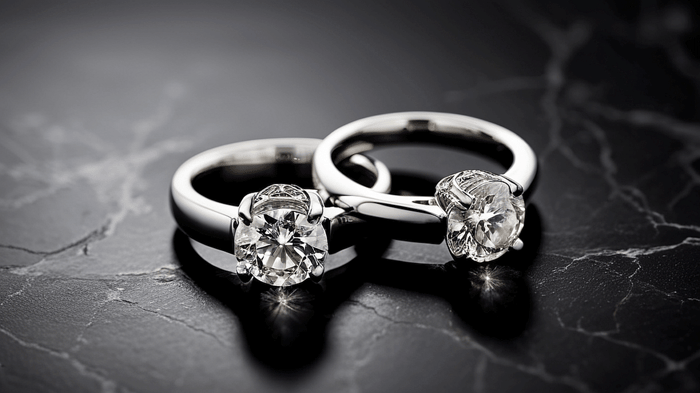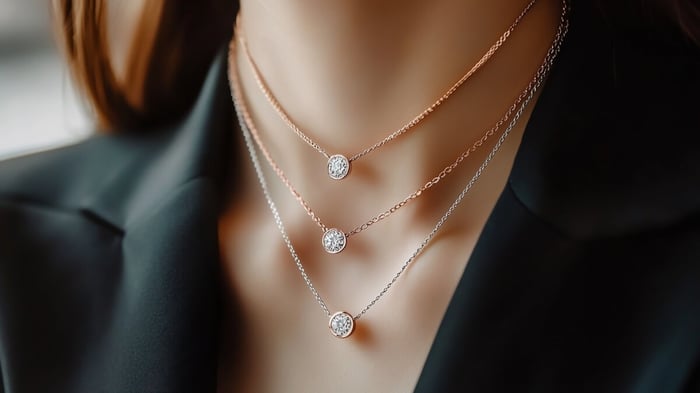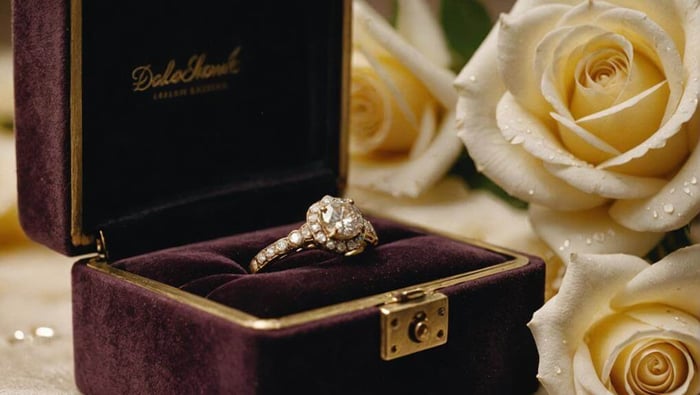Table of Contents
Selecting the right metal for diamond jewellery affects more than just appearance. "The setting is the diamond's home—it must protect as well as enhance its natural beauty," explains veteran jeweller Amara Chen. Metal choices determine durability, maintenance requirements, and how the stone's brilliance presents to observers. Colour interactions between diamonds and metals create subtle but significant effects.
What many jewellery buyers don't realise about their metal selection can impact their investment for decades to come.
Article Summary
* Platinum offers unmatched durability and security for diamond settings with its natural density and ability to develop a desirable patina.
* Gold's three colour options (yellow, white, and rose) provide aesthetic versatility that can complement different diamond colours and skin tones.
* Metal colour significantly impacts diamond appearance—colourless diamonds appear brighter in platinum/white gold while warmer diamonds shine in yellow/rose gold.
* Silver, while affordable, requires frequent maintenance and may risk stone security due to its softness and vulnerability to damage.
* Consider metal allergies when selecting settings—platinum and palladium are hypoallergenic, making them ideal for sensitive skin or everyday wear.
Platinum: The Pinnacle of Durability and Luxury

Platinum stands out as jewellery's most prestigious metal, offering unmatched durability with its natural density that's 60% greater than gold.
Its distinctive silvery-white appearance creates a perfect backdrop for diamonds, allowing stones to showcase their brilliance without competing colours.
As platinum commands a premium price because of its rarity—with annual production just 6% that of gold—its hypoallergenic properties and ability to develop a desirable patina rather than wear away make it the ultimate choice for heirloom-quality diamond settings.
Characteristics of Platinum
A true monarch among precious metals, platinum stands as the epitome of luxury in the jewellery world.
Originally adorned by ancient Egyptians and Incas, this noble metal was officially discovered by Spanish conquistadors around 1500. With production of only 160 tonnes annually—30 times rarer than gold—platinum's scarcity contributes to its prestigious status.
The exceptional properties of platinum make it ideal for fine jewellery:
1. Remarkable density - 40-60% more dense than gold, guaranteeing durability
2. Hypoallergenic nature - suitable for all skin types, even sensitive skin
3. Superior malleability - allows for intricate, detailed designs
4. Natural resistance - maintains its colour and integrity without replating
At 950/1000 purity (95%), platinum represents the highest standard in jewellery craftsmanship, making it the perfect foundation for diamonds and other precious stones. Additionally, the timeless style of platinum settings enhances the overall beauty of diamond halo rings.
Why Platinum is Ideal for Diamond Settings
Platinum is the ideal metal to pair with exceptional diamonds. The charm of platinum stems from its remarkable durability—being 40-60% denser than gold, it provides unparalleled security for precious stones.
"The hypoallergenic properties of 950/1000 platinum make it perfect for everyday wear, even for those with sensitive skin," experts note. This premium metal develops a luxurious patina over time rather than wearing away like other metals.
Diamond compatibility is another significant advantage. Platinum's neutral silvery-white colour improves a diamond's brilliance without adding unwanted hues. The metal's strength allows for more delicate prong settings while maintaining structural integrity. Additionally, platinum enhances the diamond's symbol of love by ensuring its enduring beauty is showcased for generations.
For those pursuing jewellery that symbolises lasting commitment, platinum's rarity perfectly mirrors the timeless value of fine diamonds.
Three Stone Diamond Ring 3.00ct G/SI Quality in Platinum

£16,966.00
£32,757.00
A flawless collection of three hand-cut perfectly placed diamonds securely set in scintillating platinum brings a sparkling sheen that can't be missed. A ring to show off at parties or subtly display at more intimate gatherings. Handcrafted in the UK,… read more
Pros and Cons of Platinum
Discerning jewellery collectors often consider platinum the ultimate precious metal choice, despite its premium price point. The extraordinary rarity in platinum sourcing—producing just 160 tonnes annually compared to gold's 2500 tonnes—justifies its higher cost bracket.
When evaluating platinum for diamond settings, consider these key factors:
1. Durability - At 40-60% denser than gold, platinum withstands daily wear without thinning.
2. Purity - Premium jewellery features 950/1000 platinum (95% pure), offering exceptional quality.
3. Maintenance - Unlike white gold, platinum requires no rhodium replating, offsetting initial platinum pricing.
4. Hypoallergenic Properties - Perfect for sensitive skin, making it universally wearable.
While platinum commands higher prices than other precious metals, its longevity, structural integrity, and timeless appearance make it an investment that truly endures.
Gold Options: Timeless Elegance in Three Colours
Yellow gold offers a warm, classic appearance that highlights a diamond's brilliance, whereas white gold delivers a sleek, modern aesthetic similar to platinum but at a lower price point.
For those pursuing something uniquely romantic, rose gold creates a soft, pink-hued backdrop that complements diamonds with vintage allure.
Yellow Gold: Classic and Warm
A timeless favourite among jewellery enthusiasts, yellow gold offers the quintessential setting for diamond pieces that radiate warmth and traditional elegance.
Created by mixing pure gold with copper and zinc alloys, yellow gold benefits include its ability to complement warm skin tones and enhance the brilliance of diamonds through contrast.
Available in various carats, yellow gold settings range from durable everyday 9ct pieces to luxurious 18ct alternatives.
Yellow gold trends continue to evolve while maintaining classic appeal.
The advantages of yellow gold include:
1. Heritage value - connects wearers to centuries of jewellery tradition
2. Versatility - pairs beautifully with both modern and vintage designs
3. Low maintenance - requires minimal care compared to white gold
4. Investment quality - maintains value well, especially in higher carats
White Gold: Sleek and Modern
Elegance meets modernity in white gold, the sophisticated choice for contemporary diamond settings. Created by combining pure gold with silver and palladium alloys, white gold offers a distinctive off-white appearance that beautifully complements diamonds.
White gold benefits include its durability and versatility, particularly in 12kt purity and 18kt purity alternatives. These provide exceptional strength for everyday wear while maintaining significant value.
"The popularity of white gold stems from its ability to improve a diamond's brilliance," note expert gemstones specialists.Proper white gold care includes occasional rhodium replating to maintain its lustrous appearance. The slight maintenance required is worthwhile for its timeless appeal and ability to showcase diamonds with unparalleled clarity.
Exclusive Halo Diamond Engagement Ring 0.65ct G/SI 18k Yellow Gold

£1,502.00
£2,597.00
A flawless setting with an impressive centre diamond, this ring is a timeless piece that will never go out of style. With a simple, classic design that is sure to become a staple in her jewellery collection, she can wear… read more
Rose Gold: Romantic and Unique
Exquisitely warm and distinctive, rose gold has emerged as a popular choice for those seeking a romantic alternative to traditional settings. This unique mixture is created by combining pure gold with copper, giving it that signature pinkish hue that complements all skin tones.
Rose gold unique settings offer several advantages for diamond jewellery enthusiasts:
1. Durability - The copper content makes rose gold stronger than pure yellow gold.
2. Versatility - Pairs beautifully with both colourless and elegant coloured diamonds.
3. Timelessness - Despite trending recently, rose gold has historical roots dating back centuries.
4. Value retention - Available in various carats (9ct, 1c2t, 18ct), maintaining exceptional resale value.
The 12ct purity choice provides an ideal balance of durability and warmth, whereas 18ct purity delivers a deeper, more luxurious tone.
Silver: Affordable Elegance
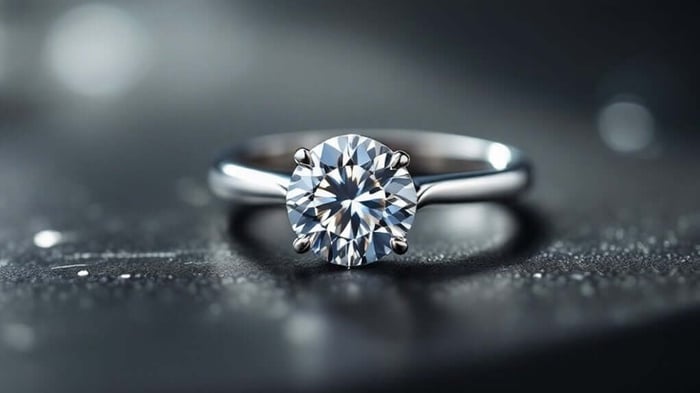
Silver provides a cost-effective alternative for diamond settings while maintaining an elegant appearance.
However, its vulnerability to scratches, dents, and tarnishing poses considerable maintenance challenges for daily wear.
"Many customers are attracted to silver's price point, but we advise considering the long-term durability factors when choosing a setting for valuable diamonds," note industry experts.Is Silver Suitable for Diamond Jewellery?
When considering precious metals for diamond jewellery, many wonder about the viability of silver as a selection.
While silver engagement rings offer an affordable substitute to traditional gold or platinum settings, several factors merit consideration before making this investment.
The drawbacks of silver include:
1. Durability concerns - Silver's softness makes it prone to scratches, bends, and potential stone loss.
2. Tarnishing issues - Regular polishing required to maintain its lustrous appearance.
3. Allergic reactions - Sterling silver contains alloys that may irritate sensitive skin. Although, in the UK strict laws minimise the issue, but be careful if buying overseas.
4. Maintenance requirements - Daily wear demands consistent care.
For those pursuing longevity in diamond settings, alternatives like white gold or platinum provide superior durability.
Many jewellers recommend these choices for pieces intended for everyday wear, especially for milestone purchases like engagement rings.
Maintenance and Durability Considerations
Many admirers of silver jewellery must balance its attractive price point against substantial maintenance requirements.
Although silver offers affordability, its softness makes it vulnerable to scratches, dents, and bending—especially problematic for daily wear items like engagement rings.
"Silver's maintenance demands can surprise new owners," experts note. "Regular polishing becomes necessary to combat tarnishing that occurs with exposure to air and moisture."
Diamond Tennis Bracelet 7.50ct Look G/SI Quality Set in Silver

£797.00
£1,687.00
This is a beautiful diamond tennis bracelet with a secret! Our designers have created illusion settings for the 1.00 carats of diamonds so that they look like 7.50 carats! This bracelet is excellent if you want to look impressive without… read more
Durability Factors to Evaluate:
- Susceptibility to weakened settings that may result in lost stones
- Potential bending with active lifestyles
- Increased likelihood of repair needs over time
For those concerned about maintenance tips, jewellers recommend storing silver pieces separately in tarnish-resistant cloth and removing them before swimming or applying chemicals.
Nonetheless, many professionals suggest examining white gold or platinum for diamond settings requiring minimal upkeep.
Comparing Metals Based on Lifestyle and Budget
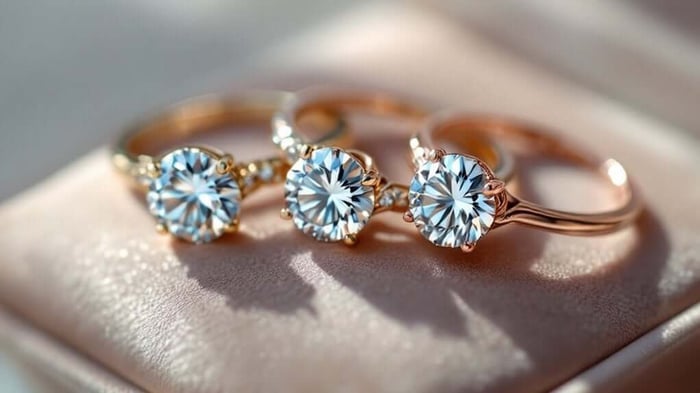
When selecting the metal for diamond jewellery, consumers must consider both lifestyle demands and financial constraints.
Those with active lifestyles might prioritise platinum or palladium for durability, whereas those with sensitive skin benefit from hypoallergenic alternatives like platinum or higher-carat gold.
"The perfect metal balances what you can afford with how you want your jewellery to look and perform over time," explains jewellery expert Samantha Peters.Durability for everyday wear
Durability is a crucial factor when selecting the perfect metal for diamond jewellery intended for daily wear. Different metals offer varying levels of durability factors that impact how well they withstand the rigours of everyday wear.
Although platinum ranks highest for strength and scratch resistance, its premium price point may not suit every budget.
For those searching for both durability and value, consider these key factors:
1. Platinum offers exceptional strength but comes with higher initial purchase costs
2. White gold provides good durability with periodic rhodium replating needed - leading to higher costs over time
3. Silver requires the most care but remains budget-friendly for occasional wear
Understanding these trade-offs helps jewellery enthusiasts select settings that will maintain their beauty through years of daily wear.
Hypoallergenic options for sensitive skin
Skin sensitivity presents a significant challenge for many jewellery enthusiasts who experience allergic reactions to certain metals. The community of those with sensitive skin must prioritise hypoallergenic metals when selecting diamond settings to guarantee comfort and prevent irritation.
| Metal | Hypoallergenic Rating | Price Range |
| Platinum | Outstanding | ££££ |
| Titanium | Outstanding | ££ |
| Palladium | Very Good | £££ |
| 18K Gold | Good | £££ |
| Sterling Silver | Fair | £ |
"Platinum remains the gold standard for those with sensitive skin," notes jewellery expert Sarah Mills. "It's virtually nickel-free and rarely causes reactions." For budget-conscious shoppers, titanium offers an outstanding substitute at a fraction of the cost. Both metals provide durable choices that allow everyone to enjoy beautiful diamond jewellery without sacrificing comfort.
15 Stone Half Eternity Ring 0.50ct G/SI Diamonds in 18k Rose Gold 2.3mm

£789.00
£1,217.00
Fifteen hand-cut stones of ethically sourced G/SI quality diamond set gorgeously and firmly in a claw setting against the warmth of 18k rose gold to bring light and a twinkle to the hand of your loved one. Guaranteed for a… read more
Balancing cost and aesthetics
Finding the perfect balance between cost and aesthetics represents one of the most challenging decisions for diamond jewellery shoppers. The metal choice significantly impacts both the price point and visual appeal of the finished piece.
When considering alternatives that align with both budget constraints and aesthetic preferences, shoppers typically evaluate:
1. Platinum—Premium durability with a premium price tag
2. White gold—Classic appearance at a more accessible price point
3. Rose gold—Unique warmth that complements many skin tones
4. Silver—Budget-friendly alternative requiring more maintenance
"The perfect metal balances what you love with what you can afford." explains one jeweller.How Metal Choice Affects Diamond Appearance
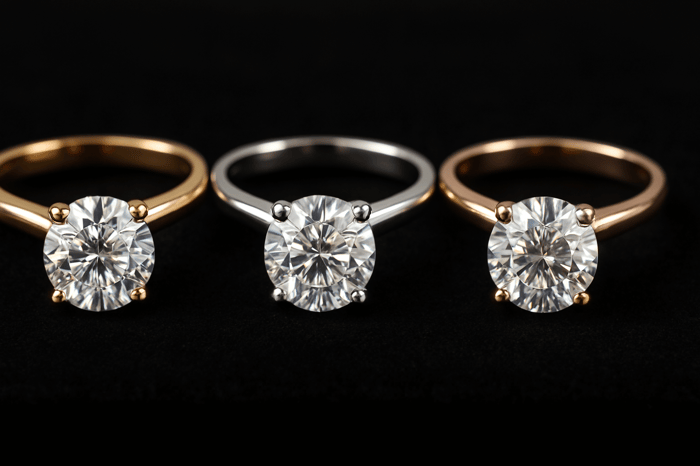
The metal chosen for a diamond setting significantly alters the stone's perceived colour by up to a full grade.
White metals like platinum and white gold improve brilliance and make diamonds appear whiter, whereas yellow and rose gold settings create warmth that may complement lower colour grade diamonds.
Experts recommend selecting platinum or white gold for diamonds graded D-J, whereas warmer metals can beautifully showcase K-M diamonds by creating a cohesive look.
Impact of metal colour on diamond brilliance
Metal colour plays a significant role in how brilliant a diamond appears when set in jewellery. The surrounding metal reflections significantly influence colour perceptions, with the prong colour having a greater impact than the band itself.
Diamonds act as prisms, reflecting colours from their environment, including the metal they're set in.
When selecting a setting, consider these important factors:
1. White metals (platinum, white gold) improve whiteness and make diamonds appear brighter.
2. Yellow gold adds warmth, shifting diamond appearance by up to one colour grade.
3. Rose gold imparts subtle pink hints to diamonds.
4. Prong colour affects diamond appearance more directly than the band.
While studio photography may exaggerate these effects, the influence of metal colour remains noticeable in everyday lighting conditions.
Cluster Earrings 1.10ct G/SI Quality Diamond in 18k White Gold

£1,502.00
£2,597.00
For a great finishing touch to any outfit, you’ll be hard-pressed to find a better option than these beautiful cluster earrings, handcrafted in the UK by our skilled artisans in flawless 18k white gold. With 1.10ct of hand-cut diamonds placed… read more
Best metals for diamonds with varying colour grades
Understanding how to pair diamond colour grades with appropriate metals allows buyers to showcase their diamond's best qualities.
The metal setting, particularly the prong influence, can improve or detract from a diamond's appearance by up to one full colour grade.
For colourless to near-colourless diamonds (D-J), platinum or white gold settings maximise brightness and whiteness. These metals create a clean backdrop that highlights the diamond's clarity.
Diamonds with warmer tones (K-M) pair beautifully with yellow or rose gold, which complement rather than contrast with natural warmth. The surrounding metal's colour is reflected within the diamond, affecting its perceived colour.
Remember that prong colour impacts diamond appearance more significantly than the band itself, as prongs directly touch the stone and influence light reflection.
Our Final Thoughts
The ideal metal setting elevates both your diamond jewellery and personal style. As cost concerns may arise, quality settings prove cost-effective through longevity and timeless appeal. "A well-chosen metal doesn't just showcase the diamond—it completes the story of the piece," explains jeweller Maria Santos. Whether choosing platinum's durability or gold's warm elegance, the right setting transforms a beautiful stone into an extraordinary heirloom.
Selecting the ideal precious metal is a crucial step in crafting diamond jewellery that truly reflects your personal style and stands the test of time.
At All Diamond, we offer an exquisite collection of fine diamond jewellery meticulously handcrafted in the UK using premium gold, platinum, and silver. Each piece showcases the unparalleled artistry of our skilled artisans and is accompanied by a lifetime workmanship guarantee, ensuring your investment is both beautiful and enduring.
Explore our online store at alldiamond.co.uk to discover the perfect harmony of precious metals and natural diamonds, tailored to your unique taste.
18K Rose Gold 0.50ct Diamond Heart Necklace

£898.00
£1,427.00
The entrancing UK hallmarked 18k rose gold forms an excellent base for this delightful heart pendant necklace with a half-carat of ethically sourced, hand-cut diamonds at its centre. A wonderfully romantic piece of jewellery that will take her breath away… read more


